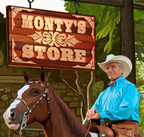there is a contradiction please look at these two refernces and tell me which one is correct : in the fisrt says double whorls are not spooky and in the second says double whorls are spooky !!!!!!
1..Devin says. “Every one I’ve bought with double swirls between their eyes is not spooky but is forgiving, very confident in themselves.”
- See more at: http://practicalhorsemanmag.com/article/devin-ryan-top-young-horses-21440#sthash.PjmDcOsK.dpuf
2..Whorls that were found to be elongated or doubled acted the most cautious when coming up to an unfamiliar object. They looked longer and were slower to approaching then the single whorled horses
http://en.wikipedia.org/wiki/Hair_whorl_(horse)




To be honest I think both articles are so fundamentally flawed as to be next to useless in my humble opinion! The variable that exists for behavioural studies are so vast that it is difficult to quantify. I see no logical reason why the direction of hair growth would determine how spooky or not a horse is. Humans are rather adept at fitting facts to an established belief and are notorious for eliminating from memory the times where something has not conformed. However, that said, everything is a subject to study and if someone decided to fund a very large (it would have to be) and rigorous study I would be very interested in the results.
:
I think you have hit the nail on the head with both articles Ebrahim - for every study/opinions that says it's "this way" there will be another that says it's "that way!"
Quite agree, It's the same as white socks.
One white leg send him far away
Two white legs keep him not a day
Three white legs sell him to a friend.
Four white legs, keep him to the end.
One white sock - buy him
Two white socks - try him
Three white socks - be on the sly
Four white socks - pass him buy.
White markings are irrelevant!!!
Whorls are irrelevant It's what goes on in their brain that matters.
i truly undrestand and accept both of you my friends however i copied both of them to be academic and present different ideas however
the first one is just someone opinion and the second is based on a study i copied below
(The researchers used various tests to assess the horses’ manageability. They gave each horse a “handling score” depending on how it responded to being led and
having its legs picked up. They also recorded the horse’s response to being startled, and how long it took to investigate a new object.
They found that in most horses, the facial whorl lay between the eyes. Horses with a high whorl position were significantly more difficult to handle than horses with whorls in either a low or medium position
Elongated and double whorls were found only in the forest-reared animals. Horses with this type of whorl took longer to approach a novel object than horses with whorls in a low or medium position.
The response to being startled was not related to the position of the whorl. Neither did the researchers find any relationship between position of whorl and heart rate during the tests.
They suggest that horses with a high facial whorl might be expected to be more stubborn when handled without being more flighty when startled. Horses with double or elongated whorls may be more cautious, although not more difficult to handle or easily startled. )
refernce :
A note on behaviour and heart rate in horses differing in facial hair whorl.
Aleksandra Górecka, Malgorzata Golonka, Michal Chruszczewski, Tadeusz Jezierski.
Applied Animal Behaviour Science (2006)
I am always prepared to keep an open mind Ebrahim but I also feel we must critically examine even research studies - the essence of peer review. For example,
:
In relation to the number of variables and the number of horses there are in the world we would only need to find 20 horses with high whorls that are 'easy to handle' and the study becomes meaningless. Even defining handling is a massive issue in itself. I am not trying to be difficult I promise, I am genuinely interested in anything that informs us but there is so much junk out there about animal behaviour that I feel we have a duty to question things. For example:
:
"Elongated and double whorls were found only in the forest-reared animals. Horses with this type of whorl took longer to approach a novel object than horses with whorls in a low or medium position. " - this could have far more to do with the fact that they are forest reared than the whorls. If you took the less spooky ones and put them in the forest (where they are not familiar with things) and show them a badger (for example), they now become the cautious ones and the forest reared ones become the less spooky ones! It depends what is "novel" and in what environment and in what context. Animals look at things and assess whether it is similar to something they have seen before so assessing novelty is difficult (lot of dog studies show this).
:
The conclusion the study reaches is too big a leap of faith based on the findings. This does not mean it is useless, it is interesting to keep looking at all this stuff :-)
If the only horses with double whorls were forest bred, that may also suggest that they share the same blood lines, so possibly similar temperaments, but also as vicci says, the environment plays an essential role.
Does it say if all the horses had the same amount of handling ie zero handling before the tests or the same handling from birth?
If not, to me, it is meaningless.
Regularly handled horses will accept new objects more easily that wild horses as they are more used to being shown new objects.
We need to know more about the baseline starting point - not quite sure how to phrase that bit!
was there any mention of the number of hair changes under the forelock?
I'd love to know what they'd say about Libby, she has 4 - 5 direction changes up there, but one whorl fairly high in the centre of her forehead.
She's a complex character whereas Ebony is a much simpler girl, she only has one.:)
I'd add in there also did they use the same breed of horse for all the tests or a mixture of breeds? Knowing different breeds act differently according to their breed, so our BamBam a Welsh D x Arab - very hot temperament, Pye our Welsh D really is a gentle boy and Barney our Shetland, most nervous out of them all and know's his strength lol. All of mine have a single whorl.
x
exactly what i meant by the forest ponies being of the same bloodline, therefore likely to have similar family traits temperament wise.
Hi all. Bella is chestnut, welsh section B. She has a massively elongated whorle under her mane. Elongated whorles are supposed to denote speed - well that checks out. She is also the best mother and more sensible than most - I trained her to be firework proof by staying with her on a November 5th and despite rockets and other fireworks launching only 70 yards away she chose to stay with me & my bag of apples. Happily she passes on her skills to my other ponies. Surely this debate is on a par with 'men with beards are hiding something' or black cats are good/bad luck. Every equine has the ability to learn new skills and each responds to the environment it encountered when born, shaped by its mothers understanding of their world. Therefore, if born to a nervous mare used to a less understanding situation the horse will be spooky whereas one born to a mare completely confident of the safety of her environment it will not be.